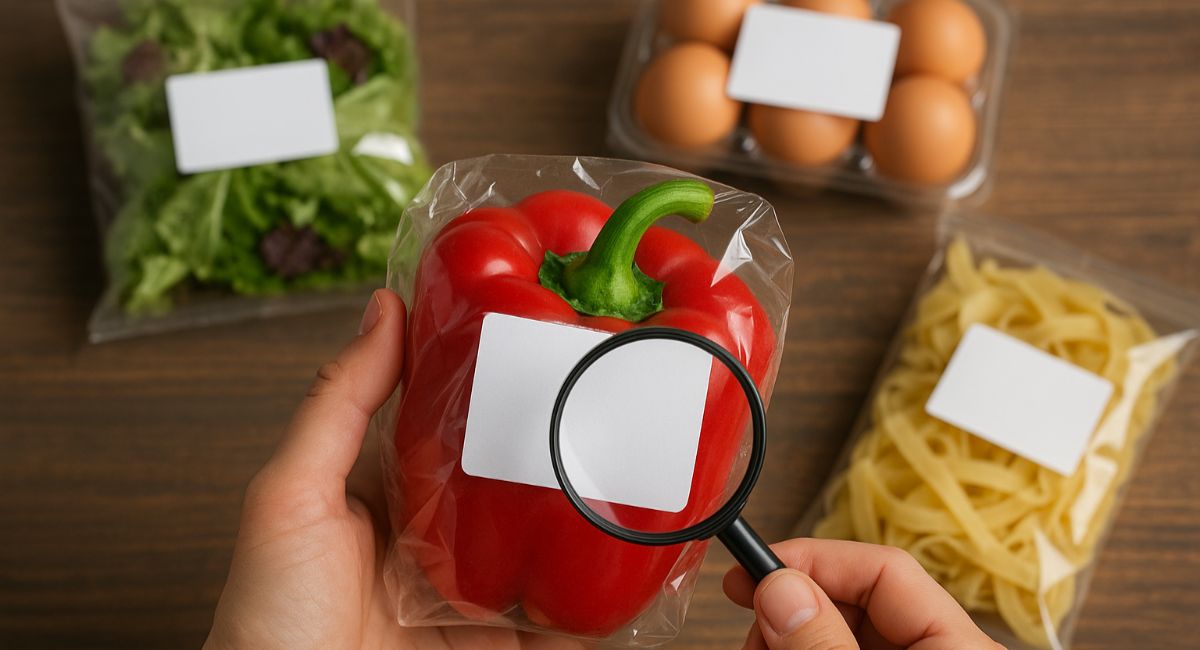Modern consumers are demanding more than just tasty food—they want complete transparency about what they’re buying. The days of vague ingredient lists and misleading marketing claims are numbered. Shoppers now scrutinise food packaging and labelling with the intensity of detectives, seeking authentic information about nutritional content, sourcing, and production methods.
This shift towards transparency isn’t just a trend; it’s reshaping how brands approach labels for packaging food products and forcing companies to reconsider their entire labelling strategy.
Why Consumers Crave Transparency
Trust has become the new currency in food retail. Recent surveys show that 73% of consumers are willing to pay more for products with transparent labelling. This demand stems from several factors:
Health consciousness drives many purchasing decisions. People with dietary restrictions, allergies, or specific nutritional goals need detailed information to make safe choices. When food labels on packaging clearly list every ingredient and potential allergen, consumers feel confident about their purchases.
Ethical concerns also fuel this transparency movement. Shoppers want to know if their food was ethically sourced, whether workers were fairly compensated, and how production impacts the environment. These values-driven consumers use packaging information to align their purchases with their beliefs.
The Impact on Brand Trust
Companies embracing transparent labelling are reaping significant rewards. Brands that provide comprehensive information about ingredients, sourcing, and production processes see increased customer loyalty and positive word-of-mouth marketing.
Take the example of craft food producers using personalised food labels to tell their story. These businesses often include details about local suppliers, traditional production methods, and family heritage. Such personalised touches create emotional connections that mass-produced alternatives struggle to match.
However, transparency requires courage. Brands must be prepared to share information that competitors might keep hidden, including details about supply chains, ingredient costs, and production limitations.
Meeting Modern Labelling Expectations
Creating effective transparent labels requires balancing comprehensive information with clear communication. Successful custom labels for food packaging typically include:
Clear ingredient hierarchies that list components in order of quantity, using familiar names rather than scientific terminology where possible.
Honest nutritional information that doesn’t hide behind misleading serving sizes or emphasise minor beneficial ingredients while downplaying problematic ones.
Source information about where key ingredients originated, particularly for organic, local, or specialty products.
Production details that explain how the product was made, stored, and transported.
The Technology Revolution
Digital technology is transforming how transparency works in practice. QR codes on packaging now link to detailed product information, supplier stories, and even live tracking data. Some companies offer augmented reality experiences that reveal ingredient journeys from farm to shelf.
These technological solutions solve the space limitation problem that has traditionally constrained food packaging and labelling. Instead of cramming every detail onto physical packaging, brands can provide comprehensive transparency through digital channels while maintaining clean, attractive label designs.
Challenges and Solutions
Implementing transparent labelling isn’t without obstacles. Supply chain complexity makes it difficult to track every ingredient’s journey. Cost considerations can make comprehensive testing and documentation seem prohibitive for smaller producers.
Smart companies are addressing these challenges through strategic partnerships with suppliers who share transparency values, investing in traceability technology, and educating consumers about the value of honest information.
Building Consumer Relationships Through Honesty
The most successful transparent labelling strategies go beyond regulatory compliance. They view packaging as an opportunity for conversation with consumers. Brands that admit limitations, explain trade-offs, and share improvement plans often build stronger relationships than those claiming perfection.
When companies acknowledge challenges, such as seasonal ingredient variations or ongoing sustainability improvements, consumers appreciate the honesty. This authentic communication style transforms labels for packaging food products from marketing tools into trust-building conversations.
The Future of Food Transparency
Transparency in food labelling will likely become the baseline expectation rather than a competitive advantage. Regulatory changes are already pushing industries towards greater disclosure requirements. Companies that embrace this shift early will establish stronger market positions.
The brands thriving in this transparent future will be those that view honest custom labels for food packaging as opportunities to showcase their values, quality standards, and commitment to consumer welfare.
Choose Transparency, Choose Trust
Food transparency isn’t just about meeting consumer demands. It’s about building lasting relationships based on honesty and respect. Brands that embrace transparent labelling today will find themselves better positioned for tomorrow’s increasingly discerning marketplace.
Whether you’re a small artisan producer or a major food manufacturer, investing in honest, comprehensive food labels on packaging demonstrates respect for your customers and confidence in your products. The question isn’t whether transparency will become standard: it’s whether your brand will lead or follow this essential transformation.

